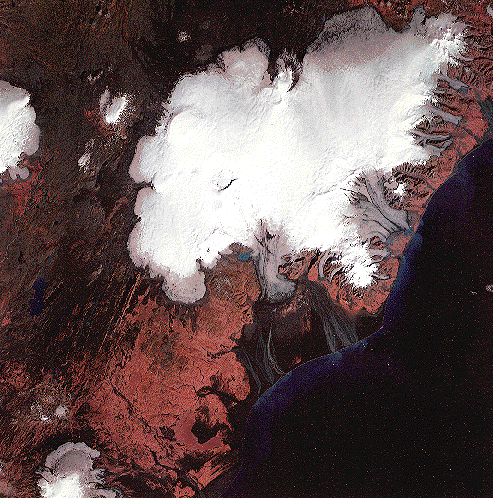Last Updated: 16 April 2001
 |
Oraefajokull is the largest active post-glacial volcano in Iceland; its height and volume exceed that of any other. Its north-western rim is Hvannadalshnukur,the highest peak in Iceland. Its crater is 3 miles (5 km) wide and it has a rim averaging 6,068 ft.(1,850 m) high. This volcano has been also known as Knappafell and Knappafellsjokull. Oraefajokull is also renown for its magnificent glaciers that sweep down into the surrounding lowland plains from the volcano's lofty heights. North and north-west of Oraefajokull is the largest glacier in Iceland, Vatnajokull. Oraefajokull has erupted only twice in historical times, once in 1362 and then again in 1727.
 |
Oraefajokull's 1362 eruption was explosive and in regards to the amount of tephra produced, was the largest in Icelandic historical time, most likely third largest in post-glacial history. This eruption completely destroyed the district of Herad with floods and tephra fall. By the 1400's a new settlement had sprung up again in this area under the name of Oraefi meaning wasteland in Icelandic. In 1727 Oraefajokull erupted again explosively with similar affects, but the eruption was smaller than the one in 1362.
 |
Sources of Information:
Thorarinsson, Sigurdur; 1958, The Oraefajokull Eruption of 1362, Acta Naturalia Islandica Vol. II, No. 2, Natturugripasafn Islands Museum Rerum Naturalium Islandiae, Reykjavik.
Simkin, Tom; Lee Siebert, 1994, Smithsonian Institution Volcanoes of the World, 2nd Ed. Geoscience Press, Inc. Tuscon, Arizona